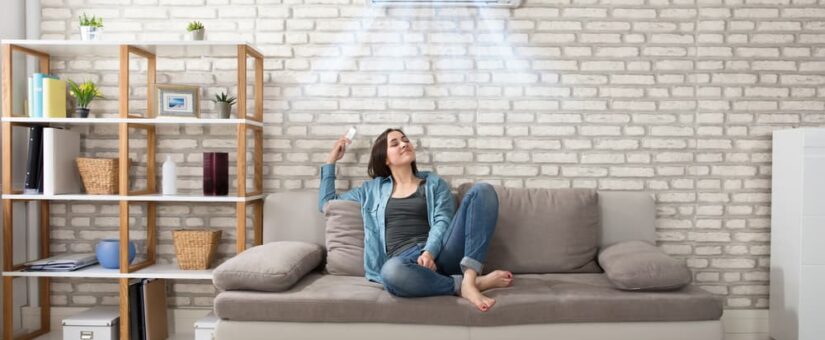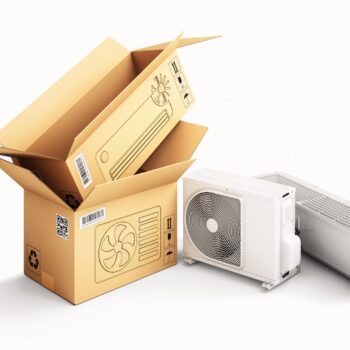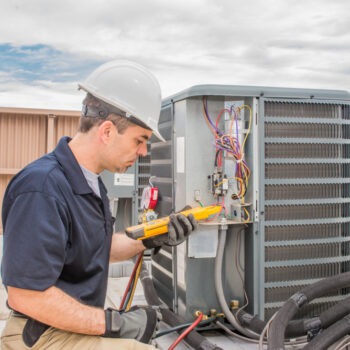
- On June 4, 2020
Updated Feb 25, 2025
What Is SEER in Air Conditioners?
Upgrading your home’s air conditioner is a big investment, and like any investment, you never want to settle for anything less than the best. When it comes to getting the best AC unit for your home, there are several details you’ll want to pay attention to but among the most crucial are the SEER2 ratings you’ll find on each and every model. Understanding how these ratings are calculated and what they mean is the key to getting the perfect A/C match for your home.
SEER2 is the abbreviation for an air conditioner’s Seasonal Energy Efficiency Ratio. This rating is the summary of how efficient any specific unit’s operations are, measuring the amount of energy that’s required for the unit to provide a specified cooling output to the average home over an extended period of time. Though there are ratings that range beyond, scores generally rest between 13 and 21. The higher the SEER2, the more efficient the unit in question is.
Why Is SEER Important?
Making up a whopping 6 percent of the total energy costs of the entire United States each year, air conditioning systems are by and large the most expensive part of any home’s monthly energy budget. SEER2 is important because it allows you to reduce this figure within your own home so you get the same amount of cooling you’re used to while creating less strain on your monthly budget. Modern units with high SEER2 ratings are between 30 and 50 percent more efficient than units installed in the 1970s, saving homeowners hundreds of dollars each year on cooling costs. In fact, upgrading to a unit with a high SEER2 can save you 20 to 40 percent off your annual energy costs compared to a unit installed just 10 years ago.
Of course, not all the benefits of SEER2 are financial ones. Some other noteworthy benefits include:
- A smaller environmental footprint
- Fewer maintenance requirements
- High tech integrations on newer models
Installing a new unit with a high SEER2 is important because it transforms not only your budget but also your home and the way it interacts with the world around it.
How Is SEER2 Calculated?
SEER2 is a final measurement of how efficient your unit is over the course of an entire year. The unit is used to maintain a consistent specified indoor temperature while outdoor temperatures vary between 60 and 100 degrees. Data regarding how much energy is used to maintain this temperature over the course of the year is collected, specifically, the amount of BTUs (British Thermal Units) used per hour. The number of hourly BTUs is used to calculate the unit’s annual cooling output. Finally, the total cooling output from the test year is divided by the amount of energy required to make that cooling happen. This final figure is the SEER2, which you’ll find conveniently labeled on any unit.
What Is a Good SEER2 Rating for an Air Conditioner?
Though the SEER2 of units back in the 70s could range as low as 3, air conditioners on the modern market range from 13 to 21 (with some exceptions measuring higher than 21). As for what a “good” rating is, that depends on several variables, including:
- The size and layout of your home
- The region of the US you live in
- How much money do you want to save
However, to make the figure a simple one, the Department of Energy has mandated SEER2 minimums throughout the United States. For the northern region, A/C units must have a SEER2 of 13 or higher, while in the southern region, 14 SEER2 units are the minimum. These are the baseline you should aim for when shopping. Of course, the higher the number, the more efficient the unit, but most moderately-sized homes won’t need a huge unit with a 20+ rating. To determine what SEER2 will serve your home best, it’s always worthwhile to work alongside a team of professionals.
Is It Worth Upgrading a Unit for a Better SEER2?
Installing a new unit is an expensive, time-consuming process in many cases, especially if you have to deal with ductwork and other details along the way. On average, a new installation will cost around $4,600 (without ductwork or other related projects) – no small commitment when you have other bills and commitments in your budget to worry about. So, is upgrading your unit worth this initial cost?
The short answer is yes – if you can afford the upgrade, it’s worthwhile. As previously noted, replacing a 10-year-old unit with a newer model with a decent SEER2 could save you nearly 40 percent on your monthly energy costs. On average, it’s estimated that your typical AC unit costs around $3.70 per day to run. It might seem like a small amount, but over the course of a month, this figure multiplies to equal around $110 just from air conditioner operations alone. If you upgrade your unit to a SEER2 with the power to save you 40 percent each month, it brings this figure down to $66. By saving $44 per month, your upgrade essentially pays for itself in less than a decade of use, and most modern units are built to last far longer than that. It’s a long-term investment, but one that pays off in multiple ways.
Where Do You Find SEER2 Scores?
If you’re interested in uncovering the SEER2 of any specific unit, there are several places you can look. Most of the time, you can find the rating on the outside of the unit itself. However, if you’re having difficulty locating it there, you have other options. You can generally find the score:
- On the product page on the manufacturer’s site
- The AHRI directory lookup
- Paperwork highlighting unit specs
If all else fails, never hesitate to get in contact with A/C professionals. They’ll have the resources needed to get you all the information you need, including SEER2 details.
What SEER2 Is Best for Your Home?
SEER2 is important, but it’s not the only variable you should consider when purchasing a new unit for your home. Details like the size of the unit, the size of your home, your home’s insulation and more should be considered when choosing your unit. Regardless, your SEER2 must still meet your region’s minimum requirements. Finding the right fit for your home allows your unit to function at the optimal level its SEER2 allows and ensures you’re making the most economically efficient decision in the long run.
If you need a little help sifting through the details to find the perfect SEER2 and unit for your home, find a team of professionals to help you measure your home and sort through the hundreds of potential options. Getting an expert opinion before you buy is the best way to ensure you’re making a wise, well-informed decision that’ll serve you and your home well in the years to come. A brief, thorough assessment from a qualified technician will reveal whether your home will actually benefit from a huge, 21 SEER2 unit or if you’re better off settling for a middle-ground model.
Contact Howard Air & Plumbing in Phoenix to get the lowdown on how you can get the perfect air conditioner with the ideal SEER2 for your Arizona home.


















0 Comments